Abstract
Yersinia enterocolitica serotype IX has been found to stimulate the production of vibriocidal antibody against Vibrio cholerae, particularly in Inaba serotype, in experimental rabbits and infected man to a significant degree. This activity could be absorbed by both Inaba and Yersinia antigens from anti-yersinia sera, but Yersinia antigen could not absorb vibriocidal activity from the anti-cholera sera, indicating a unilateral relation.
Vibrio agglutinating antibody, particularly against Ogawa, in anti-yersinia rabbit or human sera was found to be less liable to non-specific stimulation.
V. cholerae, while removing vibriocidal antibody, could not absorb the Yersinia agglutinin from anti-yersinia sera, suggesting that there is a different determinant for these two types of antibody activities.
The non-specific production of vibriocidal antibody by Y. enterocolitica type IX indicates the need for caution in the interpretation of the results of vibriocidal tests where such organisms are prevalent.
Full text
PDF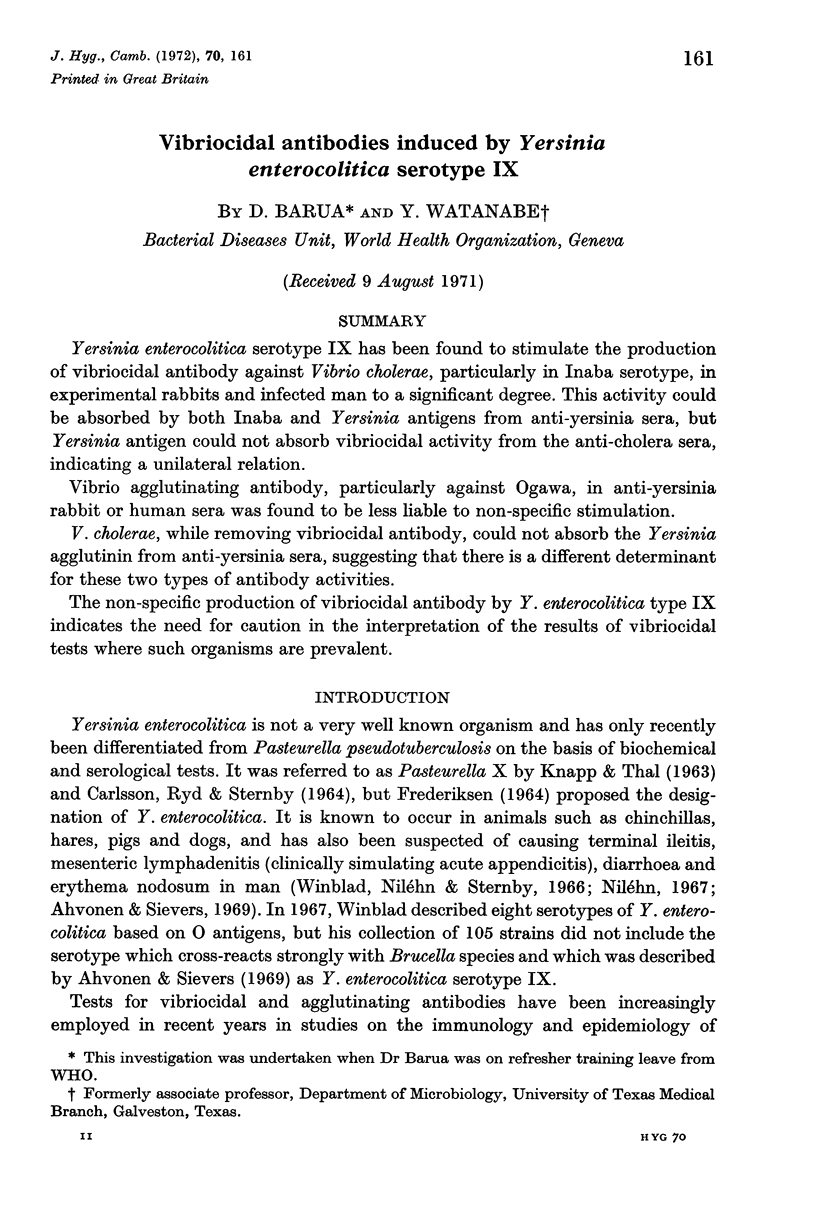
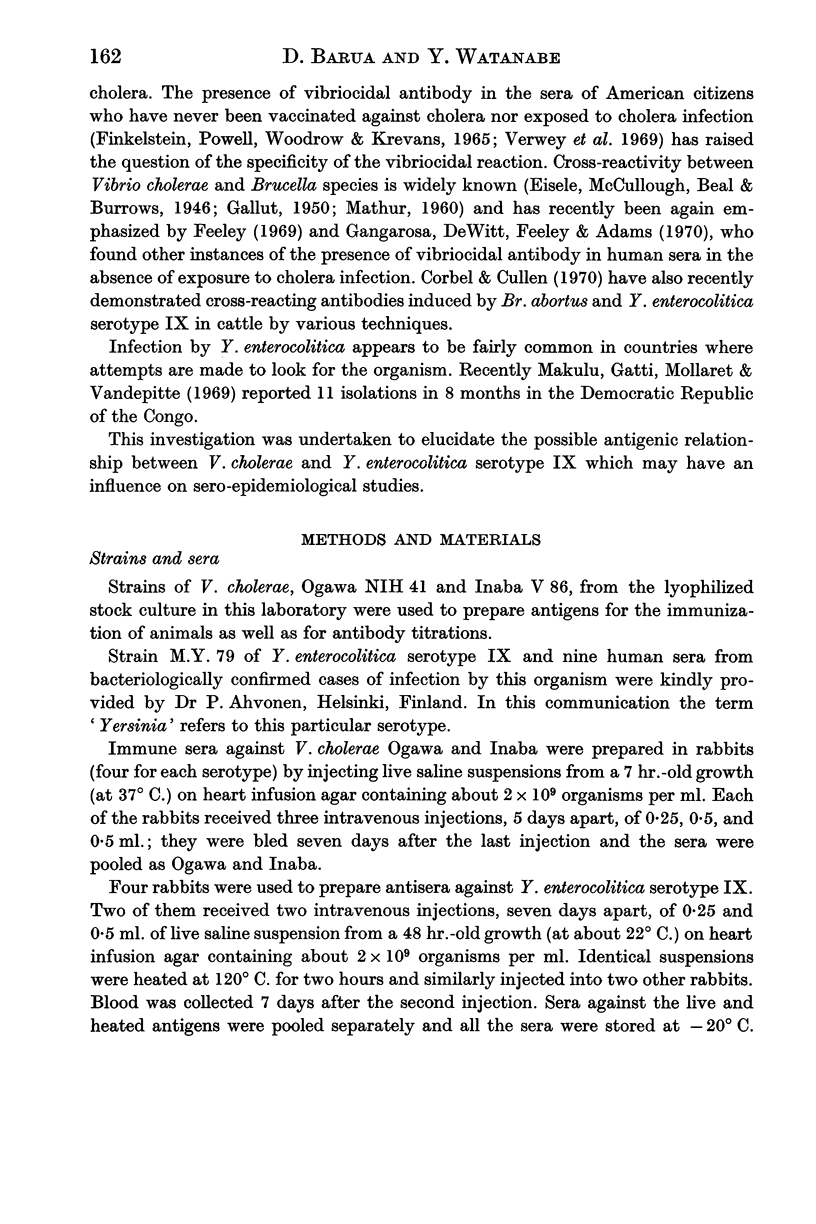
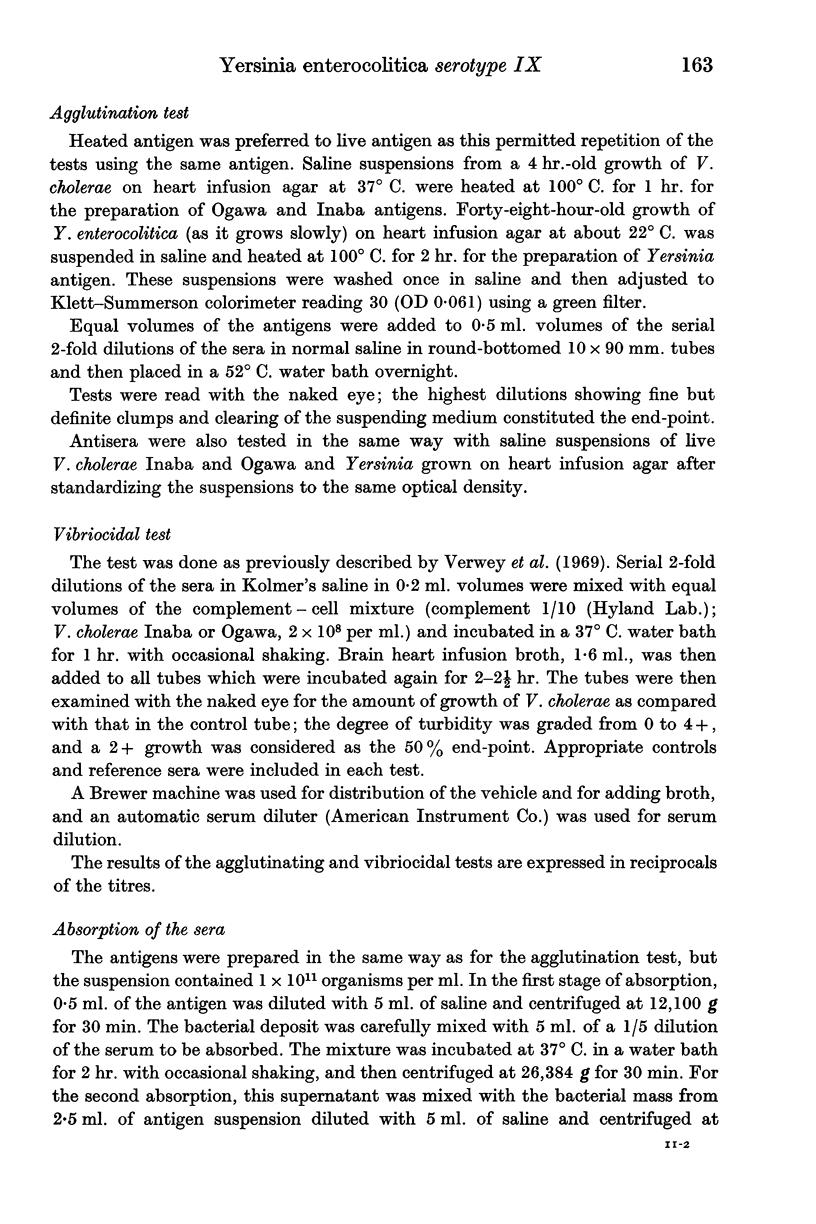
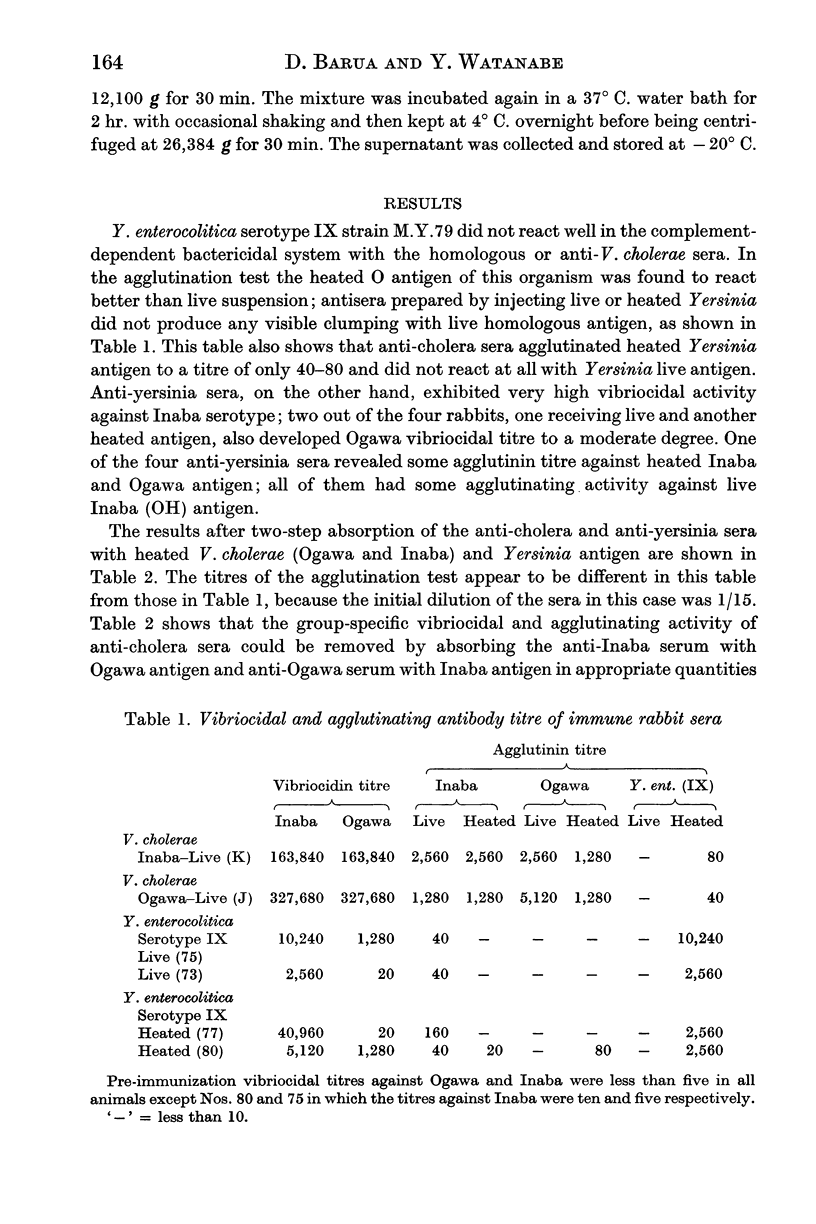
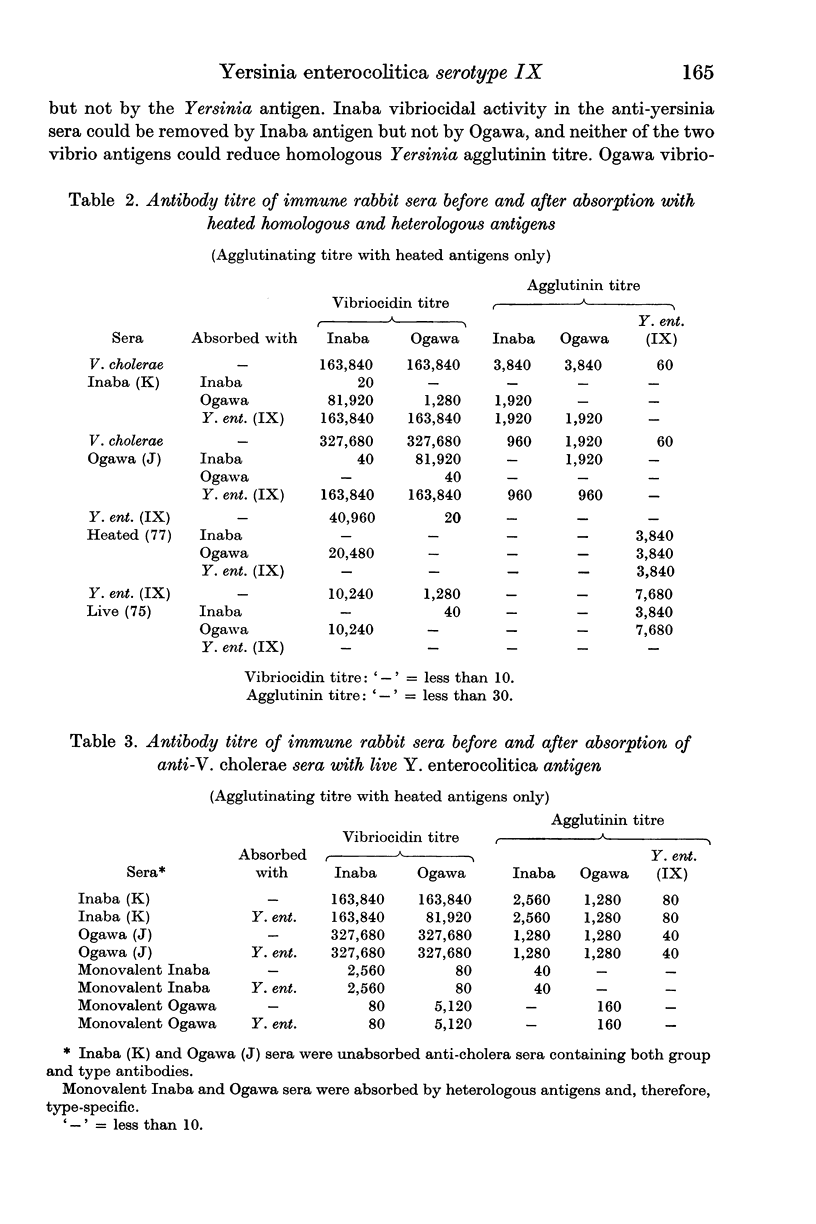
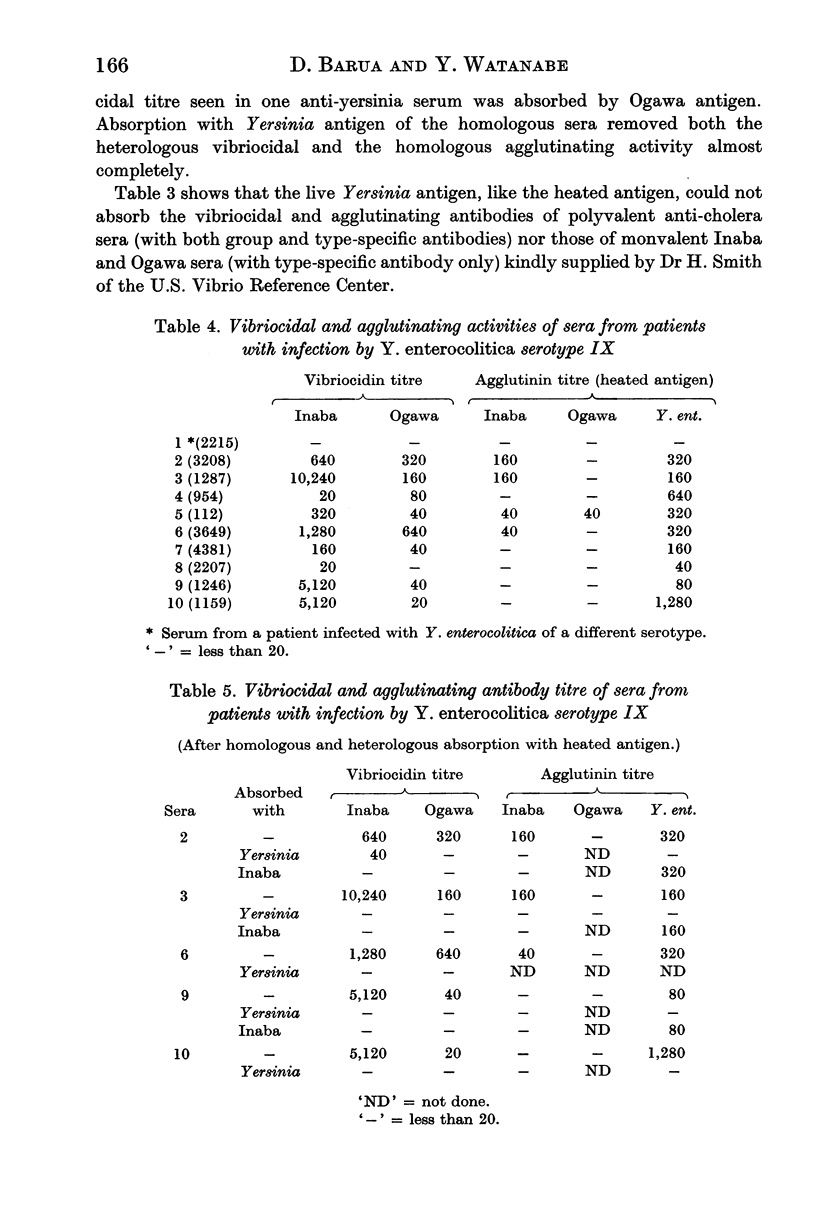
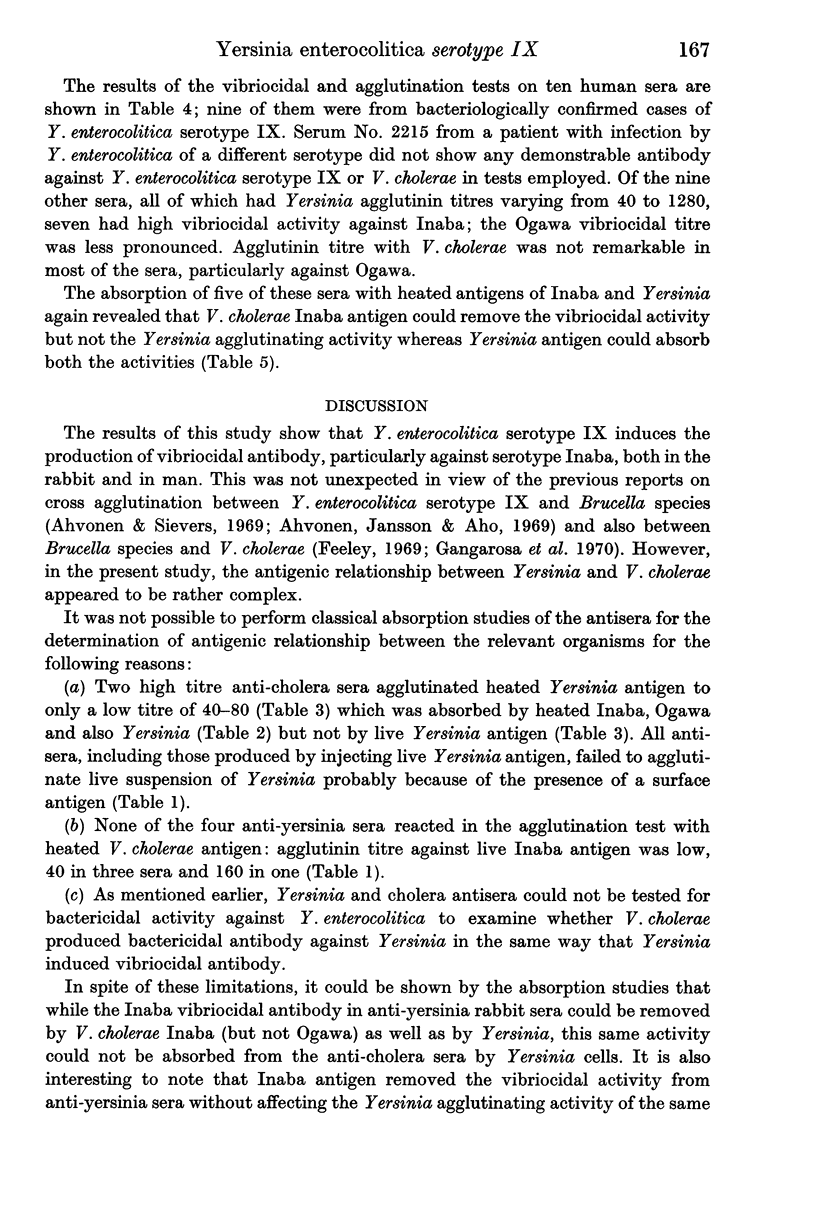
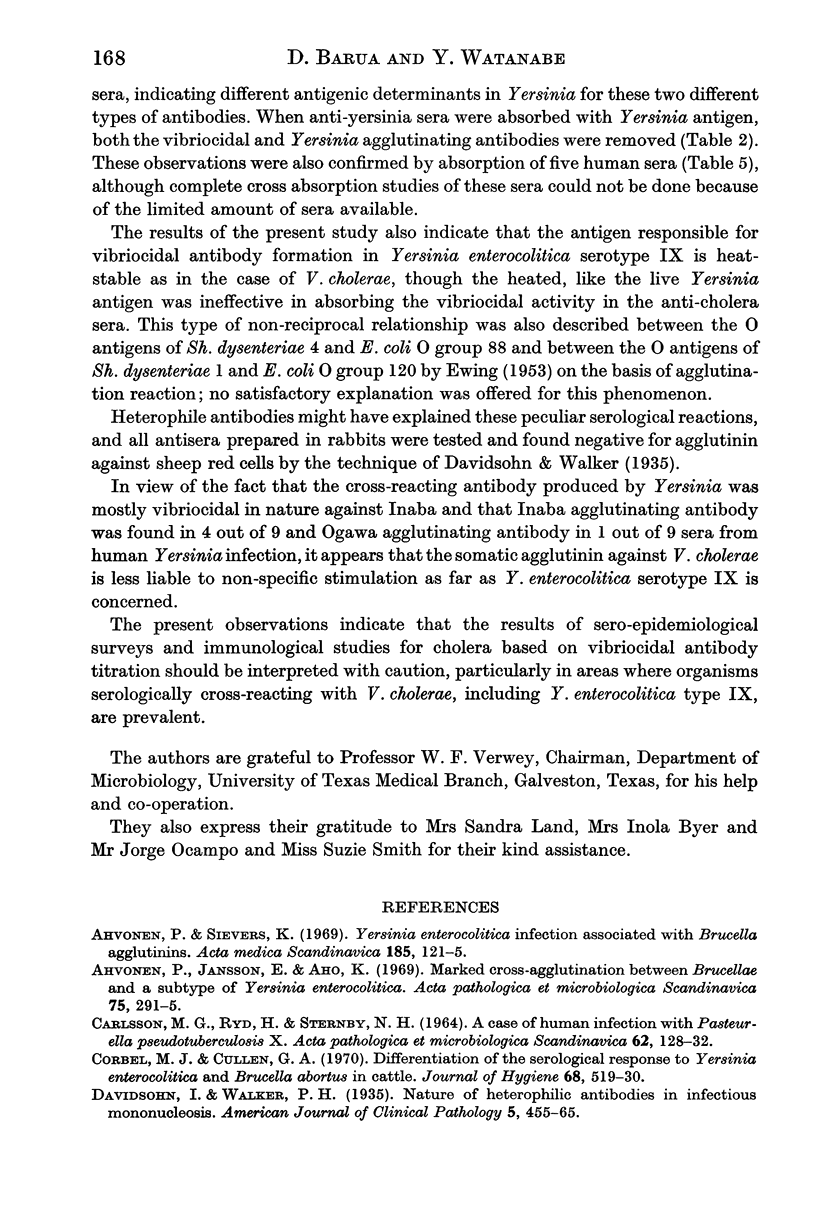
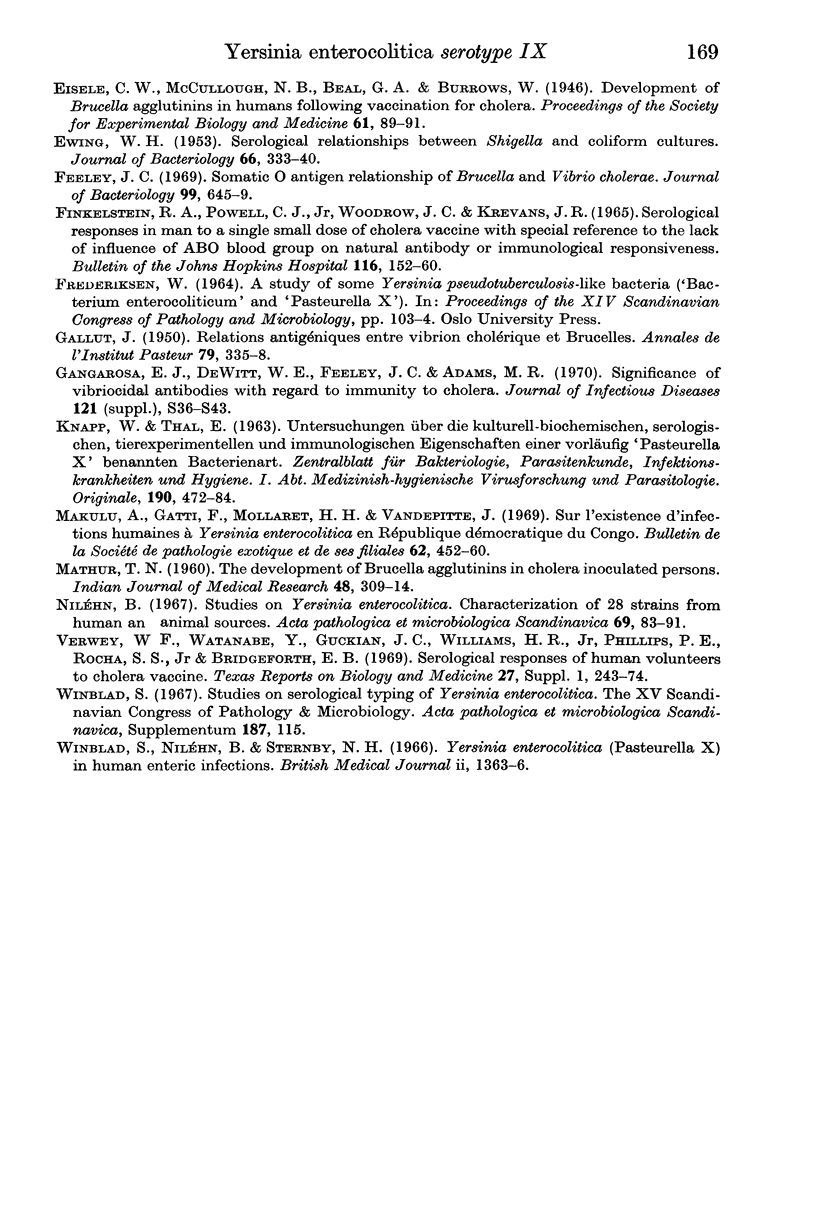
Selected References
These references are in PubMed. This may not be the complete list of references from this article.
- Ahvonen P., Jansson E., Aho K. Marked cross-agglutination between Brucellae and a subtype of Yersinia enterocolitica. Acta Pathol Microbiol Scand. 1969;75(2):291–295. [PubMed] [Google Scholar]
- Ahvonen P., Sievers K. Yersinia enterocolitica infection associated with brucella agglutinins. Clinical features of 24 patients. Acta Med Scand. 1969 Jan-Feb;185(1-2):121–125. doi: 10.1111/j.0954-6820.1969.tb07307.x. [DOI] [PubMed] [Google Scholar]
- CARLSSON M. G., RYD H., STERNBY N. H. A CASE OF HUMAN INFECTION WITH PASTEURELLA PSEUDOTUBERCULOSIS X. Acta Pathol Microbiol Scand. 1964;62:128–132. doi: 10.1111/apm.1964.62.1.128. [DOI] [PubMed] [Google Scholar]
- Corbel M. J., Cullen G. A. Differentiation of the serologicl response to Yersinia enterocolitica and Brucella abortus in cattle. J Hyg (Lond) 1970 Dec;68(4):519–530. doi: 10.1017/s0022172400042455. [DOI] [PMC free article] [PubMed] [Google Scholar]
- EWING W. H. Serological relationships between shigella and coliform cultures. J Bacteriol. 1953 Sep;66(3):333–340. doi: 10.1128/jb.66.3.333-340.1953. [DOI] [PMC free article] [PubMed] [Google Scholar]
- FINKELSTEIN R. A., POWELL C. J., Jr, WOODROW J. C., KREVANS J. R. SEROLOGICAL RESPONSES IN MAN TO A SINGLE SMALL DOSE OF CHOLERA VACCINE WITH SPECIAL REFERENCE TO THE LACK OF INFLUENCE OF ABO BLOOD GROUP ON NATURAL ANTIBODY OR IMMUNOLOGICAL RESPONSIVENESS. Bull Johns Hopkins Hosp. 1965 Mar;116:152–160. [PubMed] [Google Scholar]
- Feeley J. C. Somatic O antigen relationship of Brucella and Vibrio cholerae. J Bacteriol. 1969 Sep;99(3):645–649. doi: 10.1128/jb.99.3.645-649.1969. [DOI] [PMC free article] [PubMed] [Google Scholar]
- GALLUT J. Relations antigéniques entre Vibrion cholérique et Brucelles. Ann Inst Pasteur (Paris) 1950 Sep;79(3):335–338. [PubMed] [Google Scholar]
- KNAPP W., THAL E. UNTERSUCHUNGEN UEBER DIE KULTURELL-BIOCHEMISCHEN, SEROLOGISCHEN, TIEREXPERIMENTELLEN UND IMMUNOLOGISCHEN EIGENSCHAFTEN EINER VORLAEUFIG "PASTEURELLA X" BENANNTEN BAKTERIENART. Zentralbl Bakteriol Orig. 1963 Dec;190:472–484. [PubMed] [Google Scholar]
- Makulu A., Gatti F., Mollaret H. H., Vandepitte J. Sur l'existence d'infections humaines à Yersinia enterocolitica en République Démocratique du Congo. Bull Soc Pathol Exot Filiales. 1969 May-Jun;62(3):452–460. [PubMed] [Google Scholar]
- Winblad S., Niléhn B., Sternby N. H. Yersinia enterocolitica (Pasteurella x) in human enteric infections. Br Med J. 1966 Dec 3;2(5526):1363–1366. doi: 10.1136/bmj.2.5526.1363. [DOI] [PMC free article] [PubMed] [Google Scholar]


